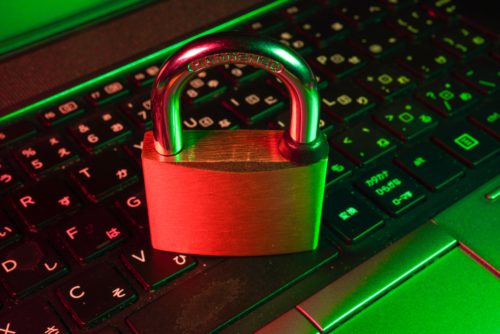Is Multi-Factor Authentication (MFA) a Critical Part of Cybersecurity?
Cybersecurity is a major focus for individuals and businesses in the modern world. Because most of our infrastructure runs through the Internet, we need reliable ways to ensure that what belongs to us stays with us and doesn’t fall into the hands of someone who might use it inappropriately or hurt us with it.
There are many ways you can improve your personal or business cybersecurity efforts, and one of the simplest and most effective is to improve your authentication systems with MFA.

What is Authentication?
According to the Computer Security Resource Center at the National Institute of Standards and Technology, authentication is defined as “the process of verifying the identity of a user, process, or device, often as a prerequisite to allowing access to resources in an information system.” Essentially, this is a website, brand, company, or other entity’s way of ensuring that the information you give them is safe and that only you can access it. It’s essentially a method for creating a digital identification card for each entity you work with, which you present to them in order to access special perks, make transactions in a commerce space, share information in a community, or otherwise use your own personal identity online.
The usual process for this is simple: you give the website (or other entity, but for convenience, we’ll say website) a piece of identifying information – usually a unique username, email address, or membership number – and pair that with a password that works as a key. The website takes this information to create a unique identification code. When you input the identifying information and the password together into the website, that identification code is “unlocked” and allows you to access any personal information you choose to share with them, from payment cards to order histories to addresses to important documentation.
Unfortunately, it’s relatively easy to steal someone’s password. People may write down their passwords, tell them to friends, or use the same password across multiple accounts. Thieves will also use programs that use algorithmic testing to generate the correct password and crack into your account. If this happens, your personal information is at risk of misuse or theft.
How Multi-Factor Authentication Works
Multi-factor authentication (MFA) is a method of authenticating data in multiple steps so that your information is more secure. Think of it like adding additional locks and keys to your security system.
In a system with MFA, when you create your login credentials, you’ll be prompted to connect a secondary method of identification. This most often comes in the form of a phone number, email, or authentication application. The system sends a unique code, usually about six digits long, to your secondary identification. You then enter this code into the space provided in the system, which, to return to the metaphor from before, acts as a key to the second lock on your information.
From there, every time you log into your account, you’ll be prompted to enter one of these unique codes from the second source, meaning there is an extra step with an outside device or system that you need access to covering your information. This means that, even if they do get your password, malevolent forces can’t access your information.
The Risks of MFA
Of course, no system is without its risks. If, somehow, a bad actor gets into your account even with MFA, they can change the secondary identifier to something they own, locking you out of your account without changing your credentials. Additionally, if you lose access to your secondary identification, you’ll be locked out of your account. Usually, this can be resolved with a call to your system’s technical support center, but it is a risk to be aware of.
That being said, technology is evolving in the space of bad actors that are capable of mimicking authentication applications and bypassing MFA with computer viruses. Text messages are notoriously unsecured, meaning that, if a hacker can gain access to your phone or text records, they can bypass MFA that way. These technologies are still in early stages, but have been known to cause serious damage when not properly addressed by the systems using MFA.
Some of the best ways to combat these issues with MFA are to
- Ensure that you have multiple secondary identification methods listed on your account
- Regularly ensuring that you have access to all of your secondary identification methods
- Immediately remove secondary identification methods from your account when they are no longer in use or no longer accessible
- Contact your system support immediately if you notice any strange activity on your account or receive any unsolicited MFA codes
Is MFA Worth Using for Your Cybersecurity?
No system is perfect, but if a cybersecurity measure is effective, it’s worth trying. MFA has been a trusted cybersecurity measure for many years because it is, to a large degree, effective. The technology behind it has evolved and advanced over time at pace with the technology that is used to foil it, so, combined with other measures like conscious data protection and encryption, MFA can be a useful and powerful part of a good cybersecurity strategy.

